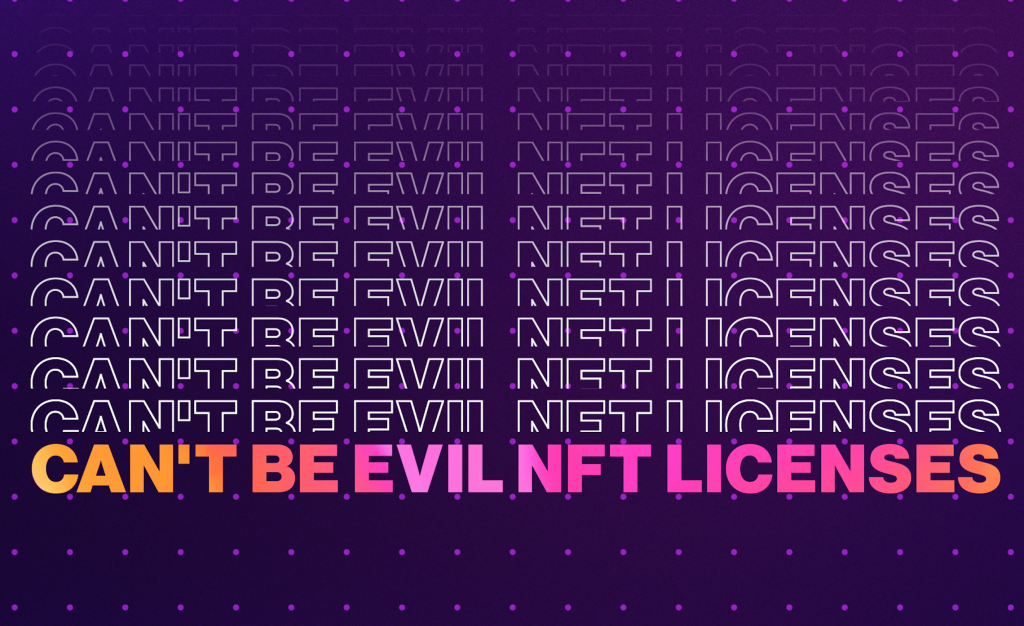Licenses connected to non-fungible tokens (“NFTs”) are still far from being the norm, which means that most NFTs still do not convey sufficient or appropriate intellectual property usage rights in connection with any underlying content, an issue that can be compounded by the practical difficulties inherent to the nature of NFTs. The need for licenses tailored specifically to the NFT market is, therefore, evident. To address these issues, publicly available NFT license systems are starting to emerge. The question is: Are they any good?
In the past few years, we have seen NFTs become something of a mainstream phenomenon. Even if the hype has calmed quite down, NFTs may be here to stay. After all, new NFT projects continue to emerge seemingly every day and the dawn of Web3 and the metaverse paves the way for many more creative possibilities and opportunities when it comes to NFTs and the technology that underlies these tokens, which can be used to give substantial control over the creative works connected to them. But that control is not automatic. Rather, a license is necessary to connect an NFT with rights of use or exploitation to the creative work attached.
Against that background, here is a look at the current state of this market and an outlook on the possible use of NFT license regimes going forward.
Current Issues & Legal Uncertainties
A relatively novel market, NFTs present significant ambiguities and legal risks (as indicated by enduring litigation centering on NFTs and attention from regulators). Pursuant to a recently published report by Galaxy Digital on NFT licenses, the vast majority of NFTs convey zero intellectual property ownership of their underlying content. Furthermore, it was found that there is a discrepancy between what the public thinks they are buying and what they are actually buying when it comes to an NFT.
These ambiguities are further compounded by the fact that, if licenses do exist, they are often kept off-chain (e.g. in the terms of use on the website of an NFT creator). This means that, among other things, any terms of use may be altered without it being clear to NFT holders. While this general does not (unless otherwise agreed) change the license acquired by an NFT holder, it may create difficulties in terms of traceability and transparency. In addition, there still might be a lack of knowledge, understanding, and foreseeability about what rights should be included in an NFT. What happens, for example, if an NFT creator has included comprehensive rights (maybe even on-chain and thus, more or less irrevocable), but these turn out to be incompatible with the actual use of the work or the mere transfer and sale of an NFT (having in mind, for instance, sublicences granted or derivatives created)?
All of this puts a strain on the industry and the development of NFTs.
The emergence of NFT licenses that “Can’t Be Evil”
To tackle these issues, NFT license systems have emerged. The Silicon Valley venture capital firm Andreessen Horowitz (also called a16z), for instance, recently proposed a new license regime tailored to the NFT market. It includes six types of broadly applicable NFT licenses that are freely available online. These so-called “Can’t Be Evil” (CBE) licenses were developed by lawyers and operators who have a deep understanding of NFTs and address some of the legal uncertainties and risks that come with them.
According to a16z, the aim of their CBE licenses is to “make NFT ecosystems more trustless, providing holders with a minimum baseline of standard real-world rights, thereby harmonizing real-world ownership with on-chain ownership.” (Specifically, a16z says that its licenses aim to advance three goals: “(1) to help NFT creators protect (or release) their intellectual property rights; (2) to grant NFT holders a baseline of rights that are irrevocable, enforceable, and easy to understand; and (3) to help creators, holders, and their communities unleash the creative and economic potential of their projects with a clear understanding of the IP framework in which they can work.”)
Following the example of Creative Commons, which “released its first set of free, public licenses, enabling creators to open up aspects of their copyrighted work to the public for sharing, remixing, and reuse beyond the default ‘all rights reserved’ notice” in 2002, they provide a set of simple, standardized licenses each type having slightly different permissions and requirements. The CBE licenses range from a comprehensive license granting exclusive commercial rights to the NFT owner (“CBE-ECR”) to the granting of personal, non-commercial rights (“CBE-PR”) to a license which dedicates the copyright to the public domain (“CBE-CC0”).
NFT creators can include a reference to their preferred CBE license directly in their NFTs’ smart contracts on-chain. With this, the CBE license is affixed to the respective NFT, and one can follow what rights are – and are not – connected to the NFT or the work attached to it.
Going Forward
NFT license systems like the one created by a16z aim to address legal issues and uncertainties that come with NFTs and any connected works, and they may lay a solid foundation for a coherent and professional NFT license regime. But are these systems a definitive solution? When vastly accepted and used, standardized licensing frameworks have the potential to remove ambiguity around ownership, minimize confusion over underlying rights, strengthen the legal enforceability of those rights, and thus, perhaps help to avoid future legal troubles and save creators some of the burden (and expense) of creating their own licensing regimes.
There are, however, some limitations to standardized licenses: Practice shows that there is no such thing as an ultimate license that could be used for many different projects (in the on- and offline worlds); licenses mostly need to be tailored to the needs and intentions in each individual scenario.
CBE licenses, for instance, are limited to copyright only (meaning that trademark and right of publicity elements, etc. are not covered). Further, the CBE license system is exclusively aligned to U.S. law – which could prove limiting given the geographically limit-less nature of the market for NFTs.
Not meant to be an all-encompassing solution, a16z recognizes that “despite the options, these licen[s]es will not be right for every project, and that the licensing needs of projects will change as rapid innovation tirelessly drives the space in new directions.” Publicly available NFT license systems, nonetheless, provide a helpful base and framework when drafting NFT licenses and, as a16z states, will hopefully set “a starting point for fostering a trustless NFT licensing ecosystem and encouraging greater standardization as the space grows.”
Anna Katharina Tipotsch is an associate at Schoenherr, where she specializes in IP, unfair competition, IT and technology law, and digitalization.
Roland Vesenmayer is an associate at Schoenherr, where he specializes in IP and unfair competition.











